HTV-9 (H-II Transfer Vehicle-9)
Non-EO
JAXA
Human Spaceflight
Quick facts
Overview
| Mission type | Non-EO |
| Agency | JAXA |
| Launch date | 20 May 2020 |
| End of life date | 20 Aug 2020 |
HTV-9 (H-II Transfer Vehicle-9) Mission / Kounotori-9
Launch Payload Status on ISS References
Developed and built in Japan, the HTV-9, known as Kounotori-9 (meaning 'white stork' in Japanese) is an unmanned cargo transfer spacecraft that delivers supplies to the International Space Station (ISS). "Kounotori" provides very basic support for ISS operations by delivering up to six tons of cargo and has the world's largest transportation capacity. It also has the unique function of carrying multiple numbers of large-size experimental instruments on one flight. 1) 2)
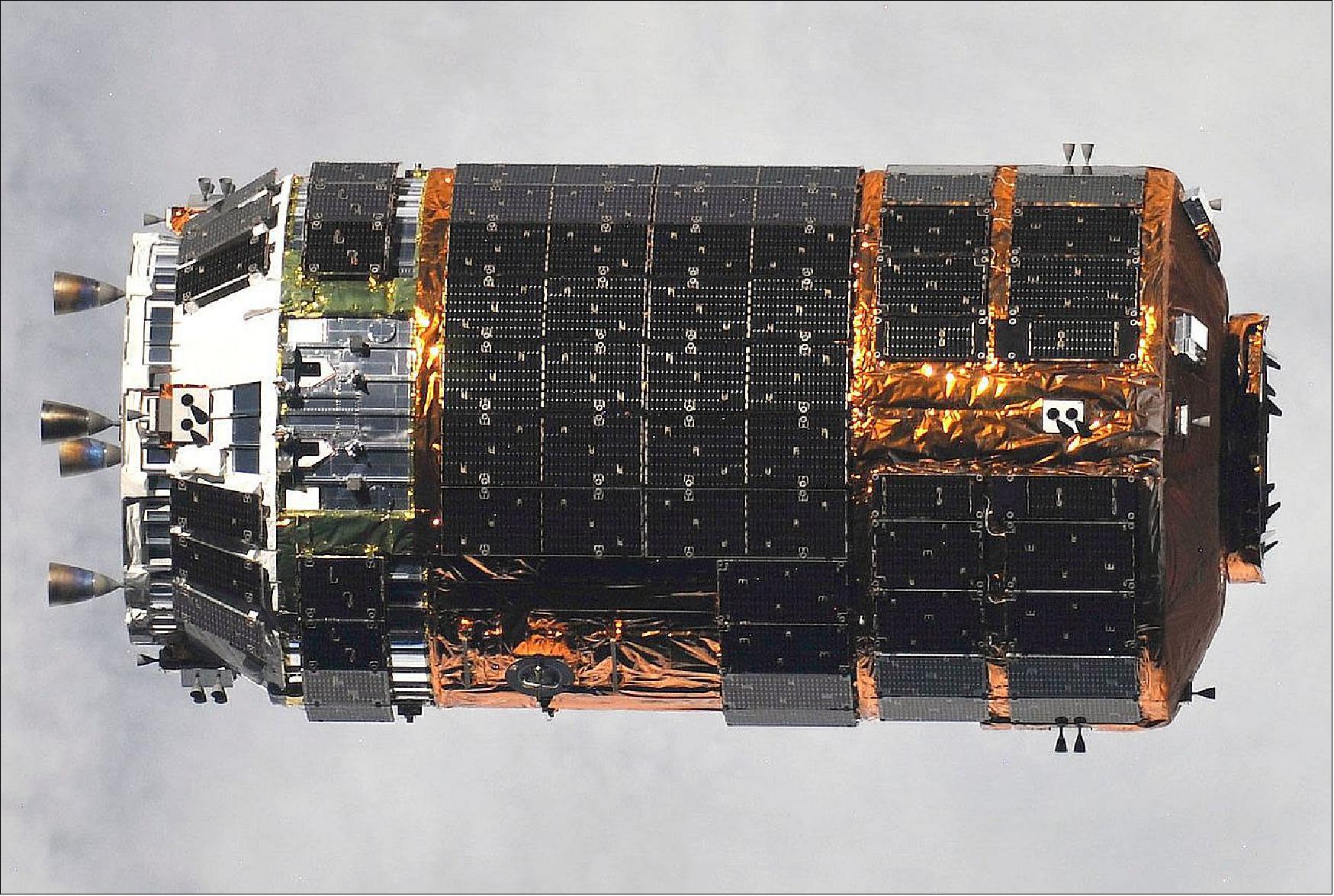
Launch
The ISS logistics flight HTV-9 was launched on 20 May 2020 (17:31 UTC, corresponding to 21 May at 02:31 JST) on the MHI (Mitsubishi Heavy Industries) vehicle H-IIB from the Tanegashima Space Center, LA-Y2, Japan. 3) 4)
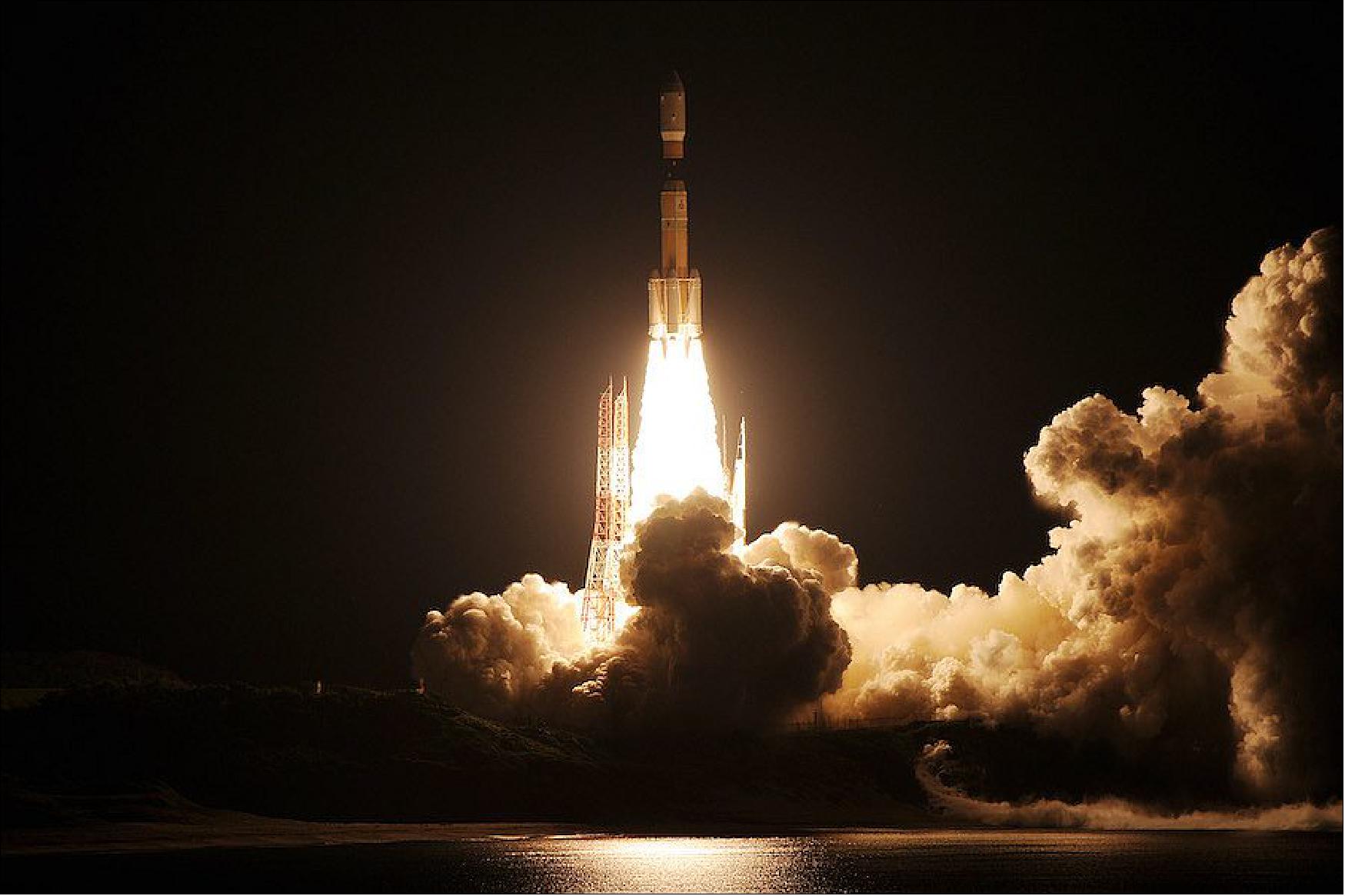
Orbit: Near circular orbit, altitude of ~ 400 km, inclination = 51.6º.
This is also the final flight of this class of resupply spacecraft, named “Kounotori” – the Japanese word for white stork. The cargo craft launched on its maiden mission to the orbiting laboratory in September 2009. JAXA is developing a new class of HTV vehicles that will provide a reusable pressurized cargo section and the ability to carry more cargo due to its lighter weight. The new HTV-X vehicles will dock automatically to the station’s International Docking Adapters with the first flight scheduled in 2022.
The H-IIB and the less powerful H-IIA rocket will be replaced by a new, less expensive Japanese launcher named the H3, which will launch the HTV-X missions. MHI and JAXA (Japan Aerospace Exploration Agency) are jointly developing the H3 rocket, which could be ready for an inaugural test flight before the end of 2020.
Arrival of the HTV-9 vehicle at the ISS is scheduled for 25 May. Controlled by station commander Chris Cassidy, the Canadian-built robotic arm (Canadarm2) will capture the Japanese cargo freighter.
Payload
HTV-9 delivers a total of 6.2 metric tons (in the Pressurized Logistics Carrier (PLC) 4.3 metric tons and in the Unpressurized Logistics Carrier (ULC) 1.9 metric tons) supplies to the ISS. Major supply goods to be delivered on board are as follows: 5)
iSIM (integrated Standard Imager for Microsatellites). iSIM-170 is a new generation high-resolution optical binocular telescope developed by Satlantis Microsats S.L. of Leioa (Bilbao), Spain. The objective of this experiment is to demonstrate the technology, and its functionality, in the low-Earth orbit environment. Once on the ISS, iSIM-170 will be installed on the i-SEEP (Small Exposed Experiment Platform) , an external facility of the Japanese “Kibo” module and start its operations. iSIM-170 has a mass of <15 kg providing imagery of < 1 m spatial resolution. 6)
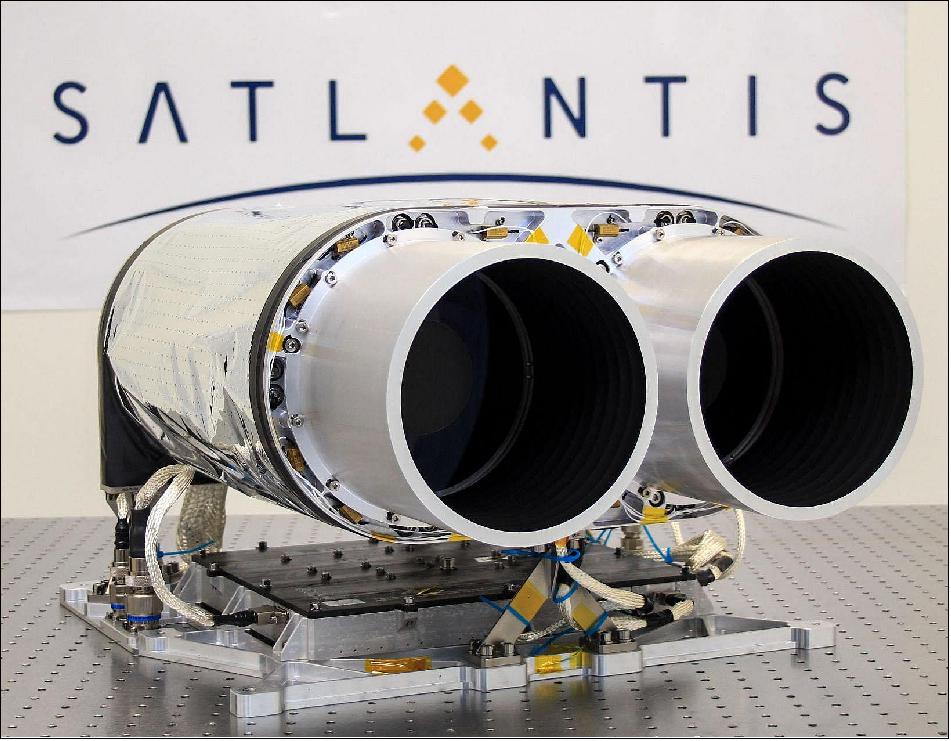
Confocal Space Microscope: This is a JAXA facility that enables fluorescence live imaging of biological samples aboard the station. Confocal microscopy eliminates out-of-focus light or glare in specimens whose thickness is greater than the immediate plane of focus. The microscope can produce data on the fundamental nature of cellular and tissue structure and functions in real-time. When combined with the heating chamber system, the microscope enables long term 3D observation of living cells. While biological experiments are the first area of concentration, the microscope could be used for chemical studies as well.
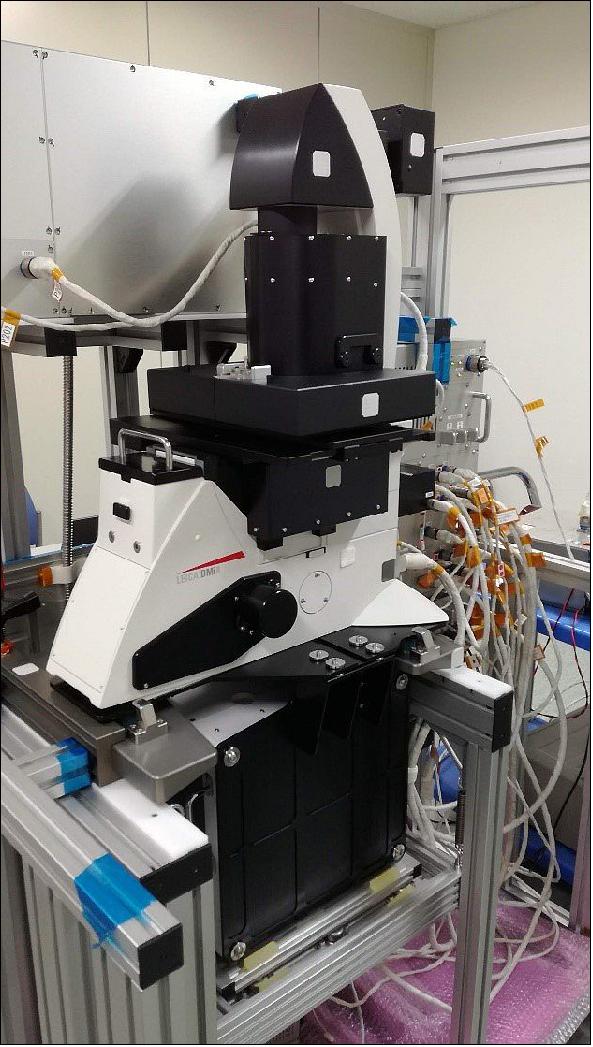
SCEM (Solid Combustion Experiment Module). SCEM is a device to be used for the FLARE project (Flammability Limits at Reduced Gravity Experiment). This project will be implemented to scientifically determine the role of gravity in different modes of combustion such as ignition of solid materials and spreading of flames on various solid materials in the ISS's environment without natural convection (microgravity environment). 7)
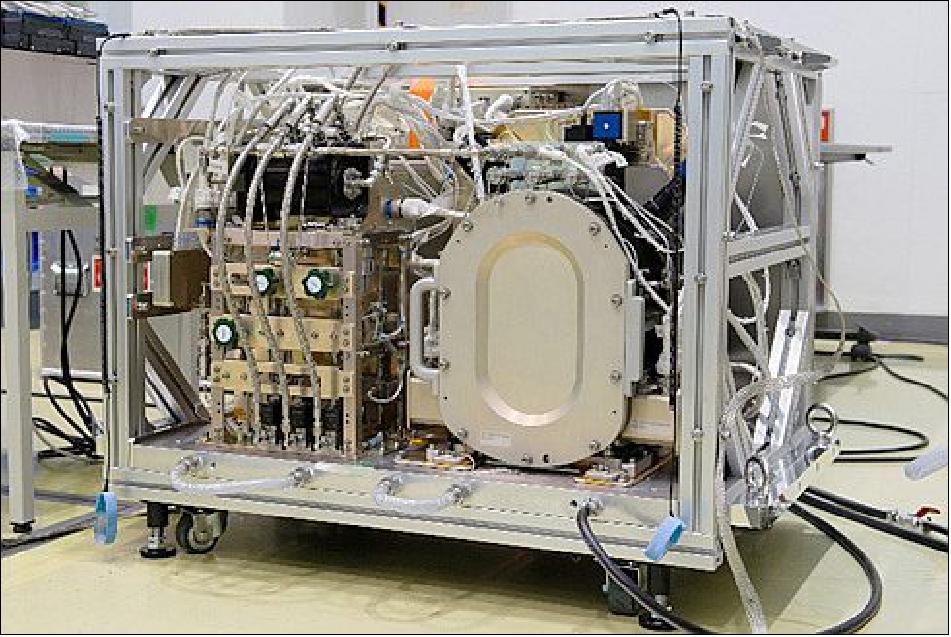
Materials related to space media business (for private purposes)
The basic components of the studio constructed for demonstration are a window of the Japanese Experiment Module "Kibo" facing the Earth (main view) and nearby tablet terminals. Technical demonstration tests will be conducted of the world unprecedented face-to-face two-way live streaming system, using a new dedicated ISS/Earth data communication protocol and a newly developed two-way communication application that can be activated in a short time. Demonstration tests in view of commercialization will also be conducted. These tests will be supported by some of the devices available on "Kibo." The HTV9 (KOUNOTORI9) will transport materials including an ND filter (used for adjusting the luminance between images on the tablet screen and the Earth image seen through the window), cables and fixing devices, which are indispensable for opening the Kibo Space Broadcasting Station as a space media business and exploitable for various future projects. Reference: https://kibo.space/en/
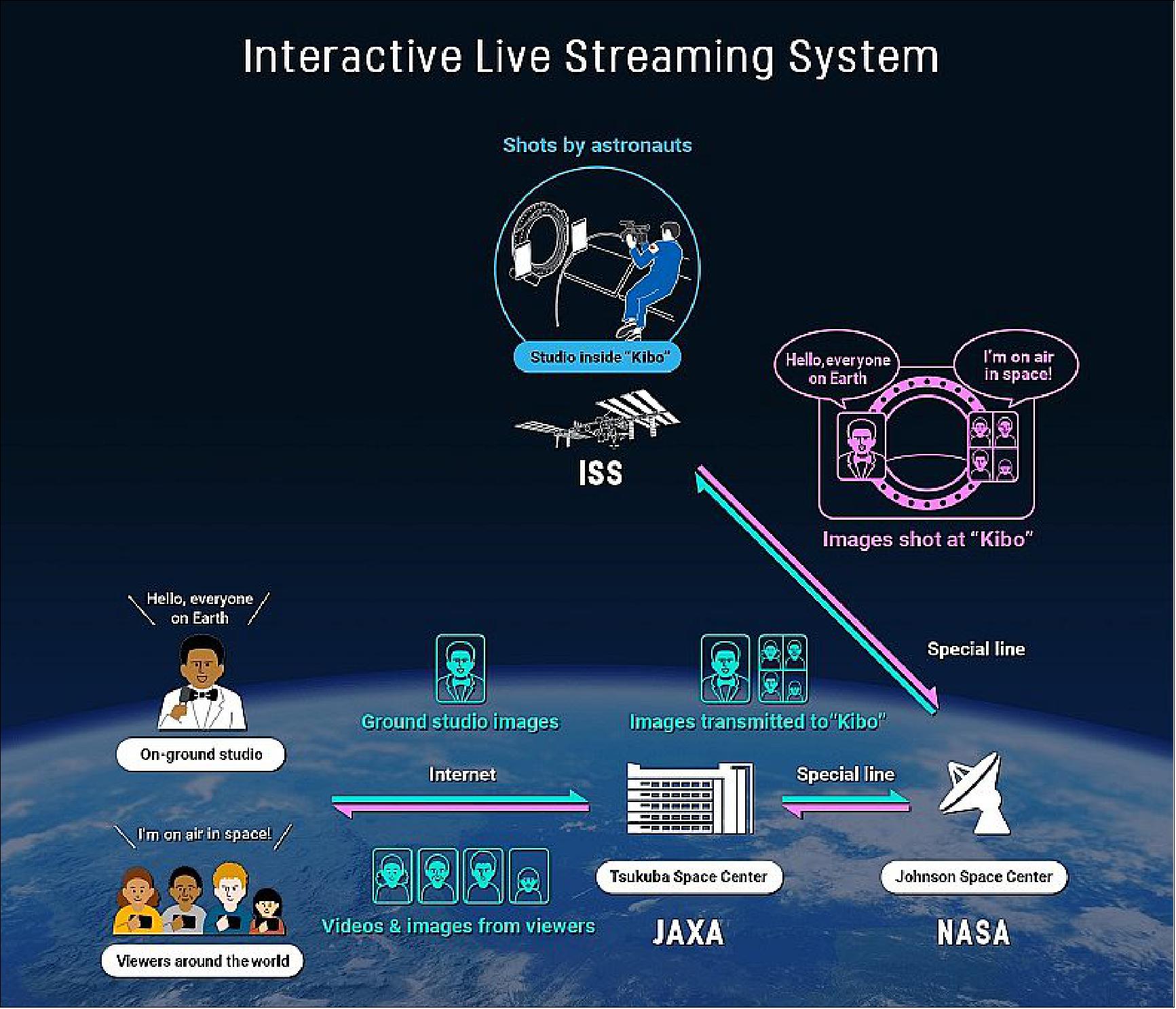
The HTV-9 will also deliver fresh food and water to the ISS crew
ISS battery ORUs (Orbital Replacement Units): Following HTV-6, HTV-7, and HTV-8, HTV-9 delivers new lithium-ion batteries for the ISS. The batteries are delivered on the Exposed Pallet (EP), placed on the Unpressurized Logistic Carrier (ULC).
The nickel-hydrogen batteries currently used on the ISS are becoming old. The extension of ISS operations becomes possible with the supply of Japanese lithium-ion battery cells. Only the HTV is capable of delivering six battery ORUs at one time, and thus plays an important role in continuous ISS operations.
Later on, the old nickel-hydrogen batteries replaced by the new lithium-ion units will be loaded into the HTV’s external cargo pallet and disposed during the cargo ship’s destructive re-entry at the end of its mission.
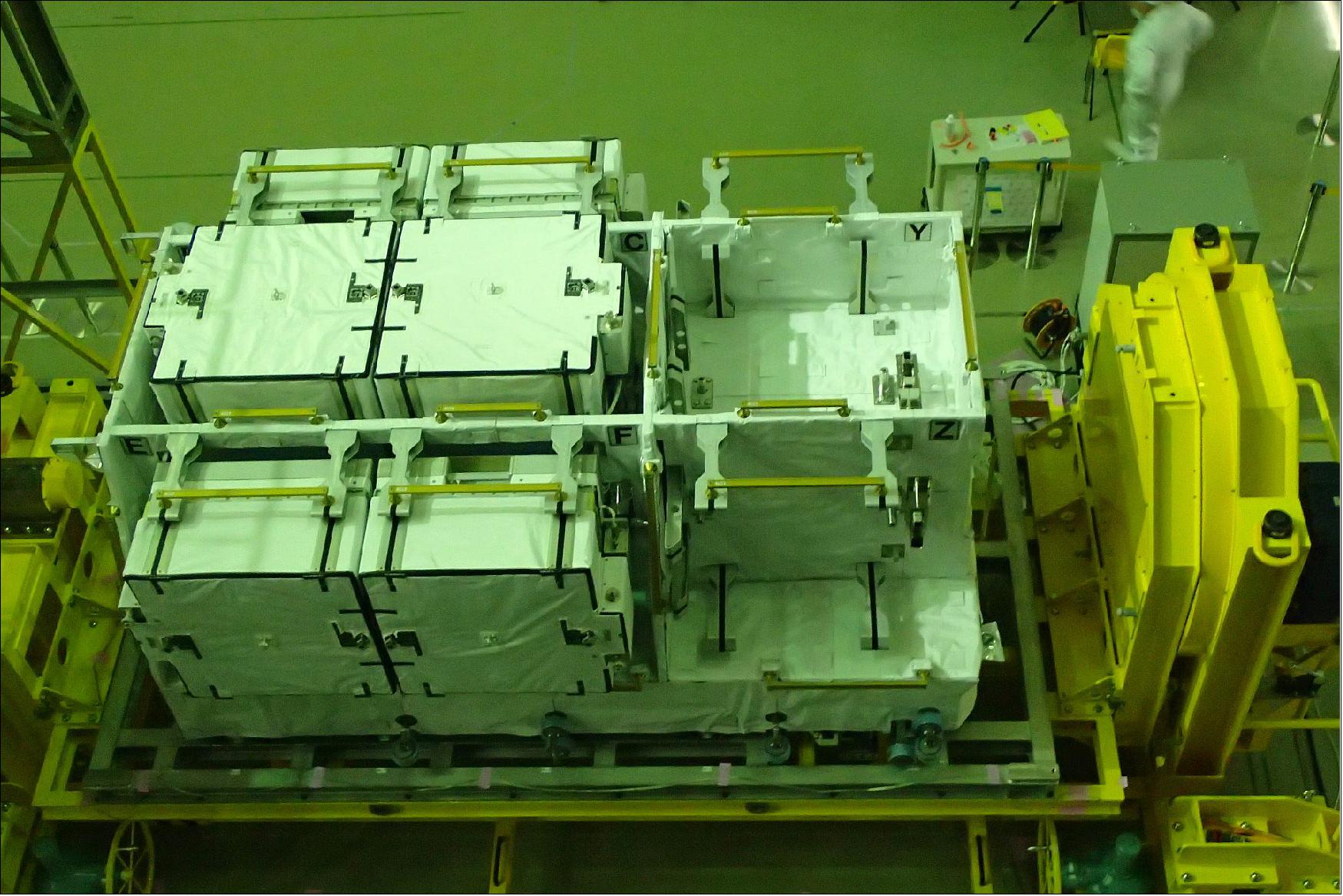
EDR-2 (European Drawer Rack) is destined for the European Columbus laboratory and will provide even greater opportunities for science in space. As the ISS enters its 20th year of operations, EDR-2 is part of a comprehensive upgrade of Columbus to offer faster, easier and more flexible access to researchers on Earth. The rack was developed by an industrial team led by Thales Alenia Space Italy, based in Turin, Italy. 8)
The EDR-2 facility offers room to run experiments by supplying power, data communication, cooling, nitrogen and venting waste gasses.
The standard-sized racks that fit in all Space Station laboratories are the size of large fridges, and fly in the Japanese HTV to the International Space Station. Once on board they become easier to manipulate for the astronauts in weightlessness.
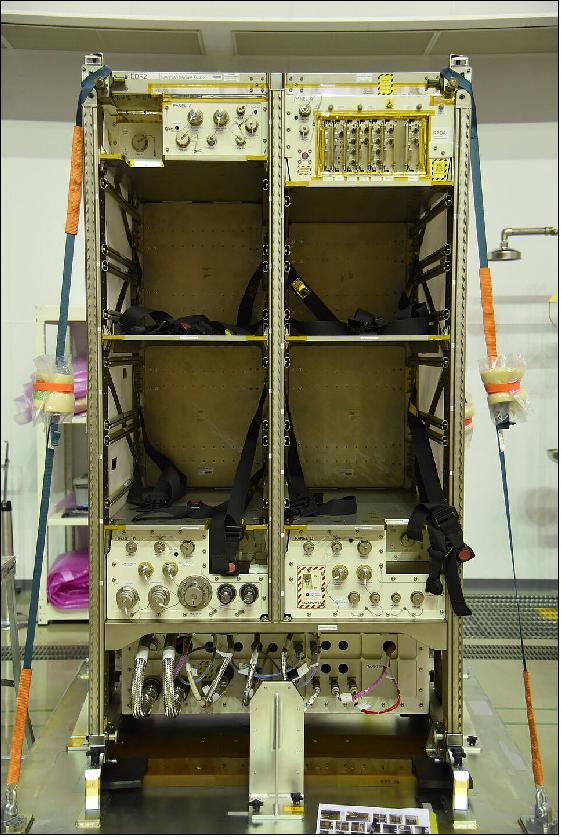
The first three experiments planned for installation in EDR-2 include a metal 3D printer, an instrument investigating granular materials and a facility looking into heat transfer.
The VIP-GRAN experiment will investigate how particles behave in microgravity to understand the underlying physics in detail. This involves looking at how particles jam together as they flow through small openings.
The Heat Transfer Host will continue ESA’s investigations into convection – how heat is transferred through air and liquids. Investigating the process in space allows researchers to look at the core mechanics without gravity getting in the way. This should improve future satellite cooling systems as well as confirm or fine-tune computer models that can be applied on Earth to improve cooling for electronics such as smartphones and computers.
These experiments are the first in a long line planned for the new facility.
More than double: The EDR-2 will not replace the original European Drawer Rack but run in parallel, increasing the possibilities of research and technology demonstration in space. EDR-2 will benefit from other Columbus upgrades to modernize data management and improve data-rates for scientists operating their experiments from laboratories on Earth.
The EDR-2 and most of its experiments will be operated from CADMOS, the French User Support Operations Centre located in Toulouse, France. A full-scale Engineering Model of EDR-2 is available at CADMOS to test instruments and prepare experiment operations, as well as run control versions of experiments on Earth.
NASA EXPRESS Racks: When the Japanese HTV-9 Kounotori cargo ship lifts off to deliver supplies and science equipment to the International Space Station, a landmark chapter in the station’s story will draw to a close — and a new chapter, helping to chart a course for Artemis-generation voyages into the solar system, will begin. 9)

EXPRESS Racks are a permanent fixtures on the station support a variety of research experiments — providing power, protective storage, cooling and heating, command and data communications and easy transport for up to 10 small payloads each.
“Since our earliest ventures into space, we’ve sought more efficient, longer-term ways to conduct cutting-edge science in low-Earth orbit and beyond," said Bobby Watkins, manager of the Human Exploration Development and Operations Office at NASA’s Marshall Space Flight Center in Huntsville, Alabama. “The EXPRESS Racks have been a cornerstone of science on the space station, and a vital part of our mission to make space exploration safer and more comfortable for our crews, and also reap untold scientific benefits back home on Earth.”
Marshall oversees space station hardware development and implementation for NASA, and NASA personnel in Marshall’s Payload Operations Integration Center monitor experiments continuously, every day of the year. At any given time, up to 80 experiments can be in process, controlled by station crew members or from the ground. The racks operate at near capacity around the clock, and data compiled by Glasgow and his team reveals a staggering fact: Since installation and startup of the first space station rack in 2001, NASA has logged more than 85 total years of combined rack operational hours using these facilities.
“The sheer volume of science that’s been conducted using the racks up til now is just overwhelming,” said Shaun Glasgow, project manager for the EXPRESS Racks at Marshall. “And as we prepare to return human explorers to the Moon and journey on to Mars, it’s even more exciting to consider all the scientific investigations still to come.”
Once the new rack is installed, 11 total racks will be on the station — the eight original EXPRESS Racks and three Basic EXPRESS Racks, more streamlined and versatile modern versions. Each is about the size of a refrigerator and comes equipped with up to eight configurable lockers and two drawers to house payloads. Experiments can be conducted, removed independently and returned to Earth, depending on varying time requirements.
The new racks, developed at Marshall and built by Boeing in Huntsville, are called Basic Express Racks. These racks have been simplified to include only the most commonly required resources and feature more common connectors such as a standard Ethernet cable.
Mission Status
• August 20, 2020: The H-II Transfer Vehicle “Kounotori9” (HTV9) successfully reentered the atmosphere after the third deorbit maneuver at 3:40 p.m. on August 20, 2020 (Japanese Standard Time, JST). 10)
Address of Dr. Hiroshi Yamakawa, President of JAXA, on the H-II Transfer Vehicle “KOUNOTORI9” Mission Completion
Today, on August 20, 2020, the 9th H-II Transfer Vehicle "KOUNOTORI9" ("HTV9") left the orbit and reentered Earth’s atmosphere as scheduled. Launched from the Tanegashima Space Center on May 21, 2020, “KOUNOTORI9” successfully docked to the International Space Station (ISS) and transferred onboard resupply items and utilization cargoes to it. Then, loaded with trash materials from the ISS, “KOUNOTORI9” departed from the ISS and completed Today’s reentry into the atmosphere to finish its mission.
The nine “KOUNOTORI” transfer vehicles have been transporting not only Japanese cargo but also those of the ISS international partners since its first launch in 2009, and have played an important and indispensable role for operations and utilization of the ISS as the only spacecraft capable of transporting large-sized experiment racks to the ISS. In particular, we believe that we were able to make a significant contribution to the future stable operation of the ISS by continuously transporting the ISS’s new batteries from “KOUNOTORI6” to “KOUNOTORI9” which replaced the old ones that had been used beyond their design life.
JAXA has acquired various new technologies and knowledge through the development, launch and operations of “KOUNOTORI”. In order to meet the strict safety standards imposed on spacecraft flying and approaching manned space facilities, JAXA developed the rendezvous and capture technology and applied it to “KOUNOTORI”. This new technology has also been adopted by the U.S. resupply vehicle, and we believe it has become and international standard. Moreover, we have also achieved many results that might lead to progress of future manned space activities through technical demonstrations making use of opportunities of “KOUNOTORI” operation, such as demonstration of the Small Re-entry Capsule (HSRC) on “KOUNOTORI7” and Wireless LAN Demonstration (WLD) on “KOUNOTORI9”.
JAXA is currently developing a new resupply vehicle, the HTV-X, as a successor to the KOUNOTORI. Based on our accumulated technologies and knowledge, we will steadily develop the HTV-X as a new resupply vehicle with improved transport capability and operability, as well as a spacecraft that can be used for cargo resupply to the manned cislunar station, Gateway.
Finally, we would like to express here our heartfelt gratitude to many officials from domestic and international organizations and many individuals who provided us with precious support and assistance to “KOUNOTORI” missions. We would like to ask you for continued attention and support to us.
• August 18, 2020: Eleven years after the launch of the first H-II Transfer cargo vehicle (HTV) to the International Space Station, the Japan Aerospace Exploration Agency's (JAXA's) HTV-9 departed the orbital laboratory today at 1:36 p.m. EDT (17:36 UTC, Figure 10). 11)
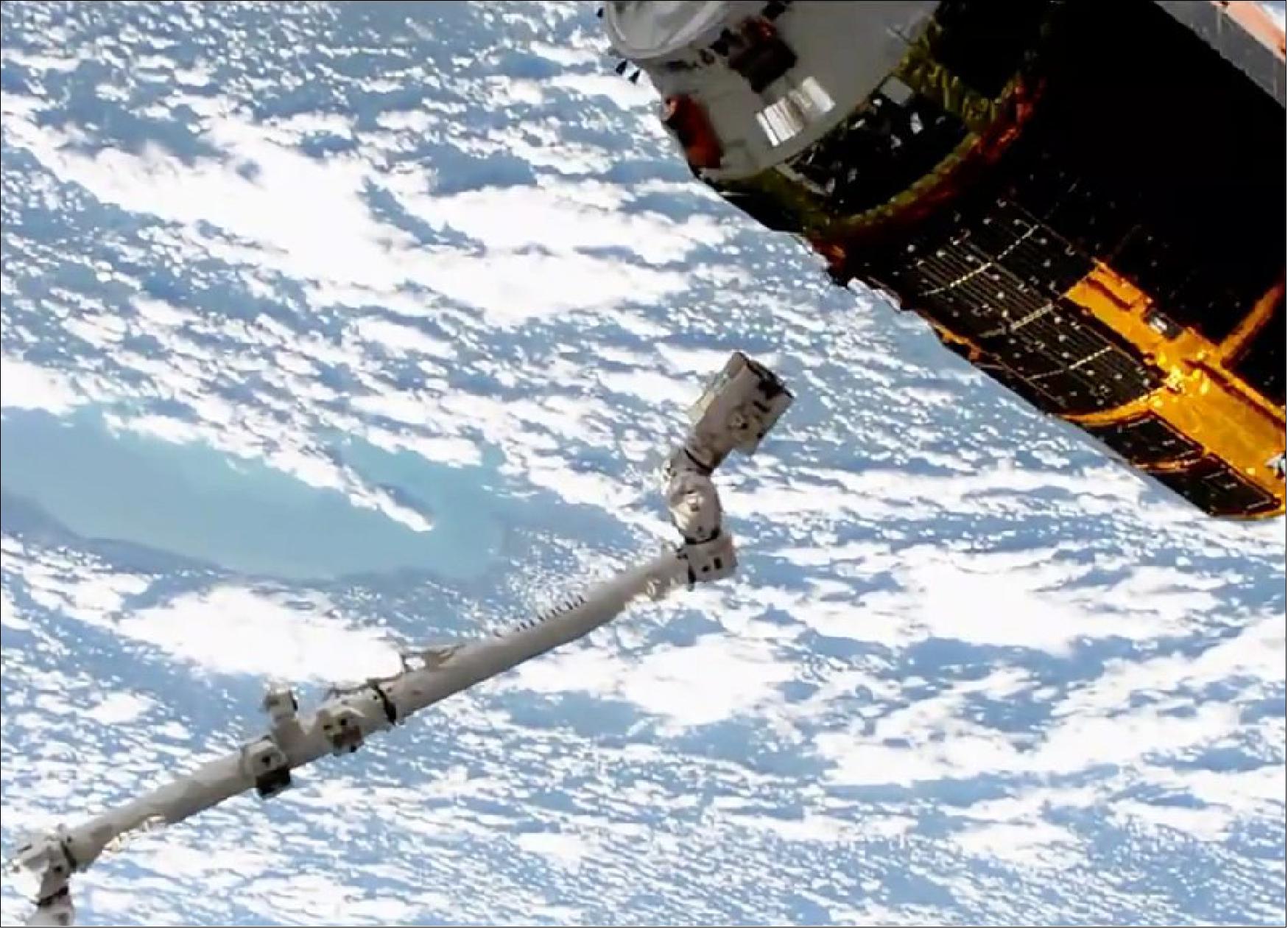
- Earlier today, flight controllers operating from NASA's Mission Control Center at the agency's Johnson Space Center in Houston used the space station's Canadarm2 robotic arm to detach the cargo spacecraft from the station's Harmony module, then moved the spacecraft into its release position. Expedition 63 Commander Chris Cassidy of NASA used the Canadarm2 robotic arm to release the spacecraft from the station at 1:35 p.m., ending its three-month stay.
- This was the final station departure of JAXA's first-generation Kounotori, or "white stork," cargo craft, nine of which have delivered more than 40 tons of supplies to space station crews. JAXA is developing a new fleet of HTV cargo craft, the HTV-X, which is targeted for its first launch in 2022.
- The spacecraft launched from the Tanegashima Space Center in Japan on May 20, arriving May 25 to deliver about four tons of supplies and experiments to the orbital complex, including new lithium-ion batteries that were used to upgrade the station's power systems. The new-technology batteries were installed through a series of spacewalks along the far port truss "backbone" of the station.
- HTV-9 will be commanded by JAXA flight controllers at its HTV control center in Tsukuba, Japan, to move away from the station and, on Aug. 20, to fire its deorbit engine in a burn that will send it back into Earth's atmosphere. Loaded with trash from the space station, the spacecraft will burn up harmlessly over the Pacific Ocean.
• July 13, 2020: Two NASA astronauts are setting their sights on the final pair of spacewalks to continue upgrading power systems on the International Space Station. The orbiting lab also deployed a pair of microsatellites today while the rest of the Expedition 63 crew explored how weightlessness affects the human body. 12)
- Flight Engineer Bob Behnken will lead the next two spacewalks to install new lithium-ion (Li-Ion) batteries on the station’s starboard truss structure starting at 7:35 a.m. EDT on Thursday, July 16, and Tuesday, July 21. He will be joined by Commander Chris Cassidy for the two six-and-a-half-hour spacewalks that will finalize the swap of aging nickel-hydrogen batteries with the Li-Ion batteries.
- The veteran spacewalkers spent a couple of hours today reviewing their spacewalk procedures step-by-step on a computer. They were joined afterward by Flight Engineer Doug Hurley for a conference with spacewalk specialists in Mission Control. Hurley also began charging the batteries that will power the U.S. spacesuits for the duration of Behnken’s and Cassidy’s spacewalk.
- A pair of microsatellites were deployed into Earth orbit today outside Japan’s Kibo laboratory module. The Deformable Mirror CubeSat will demonstrate the performance of a tiny but powerful exoplanet telescope. The TechEdSat-10 CubeSat will test returning small payloads safely into Earth’s atmosphere.
- On the Russian side of the station, the two cosmonauts focused on human biology as they conducted a hearing test and studied how diet and exercise can fight the negative effects of microgravity.
- Cosmonaut Ivan Vagner, on his first space mission, documented his meals and drinks today to help doctors learn how to counteract the loss of bone mass that occurs during long-term spaceflight. He also joined three-time station resident Anatoly Ivanishin attaching sensors to themselves to monitor their cardiovascular system while working out on an exercise bike. The duo wrapped up the day wearing headphones plugged into a computer that exposed the cosmonauts to a variety of frequencies for a hearing test.
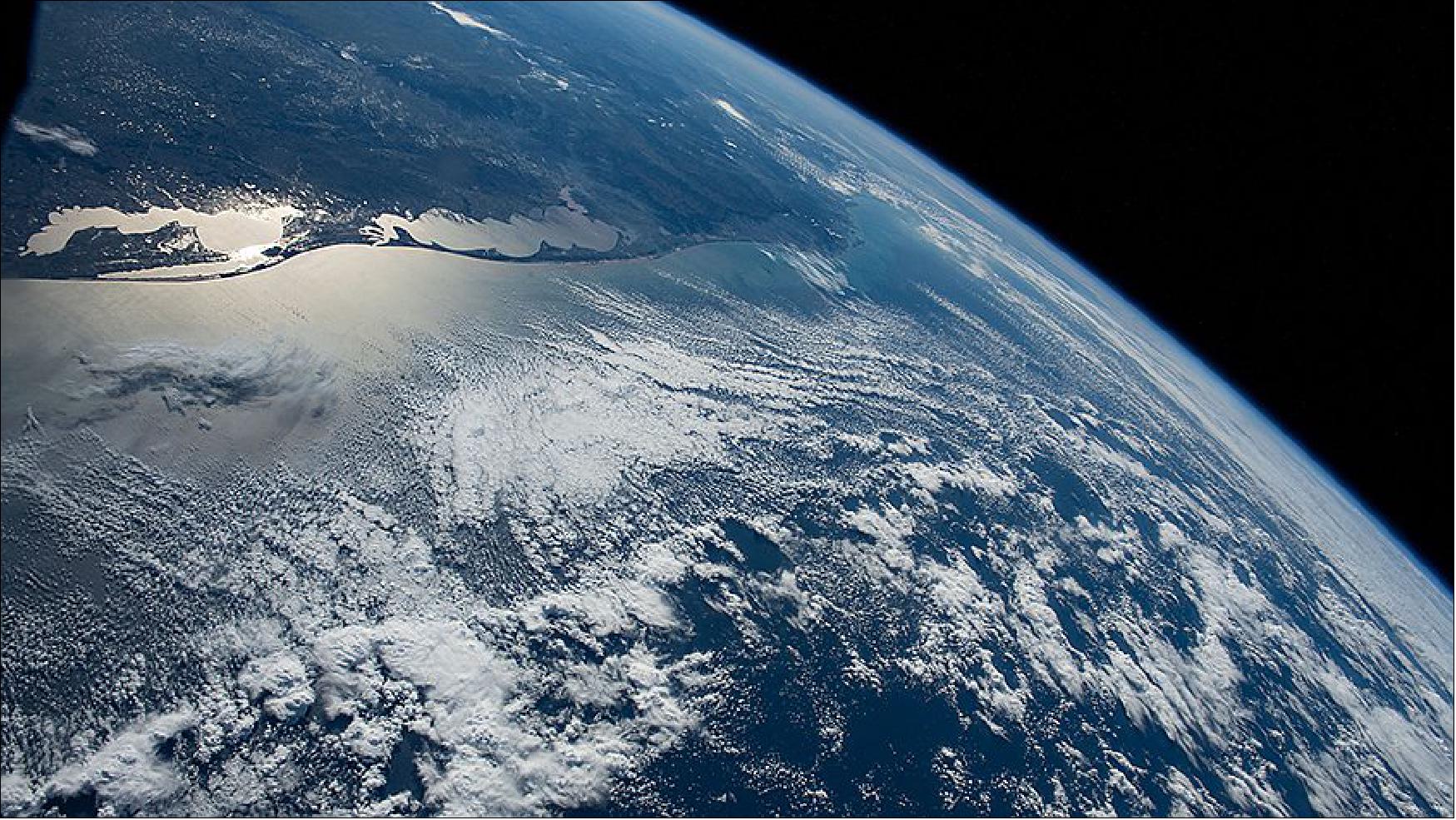
• July 8, 2020: After a successful launch aboard the Japanese HTV9 cargo vehicle, a new experiment facility was recently installed in the European laboratory Columbus as part of a comprehensive upgrade of Europe’s International Space Station module. 13)
- EDR2 (European Drawer Rack 2) is a flexible experiment facility, able to support a wide range of experiments and technology demonstrators. It supports experiments by providing power, data communication, cooling and nitrogen, and venting waste gasses. The rack is designed to accommodate many types of instruments with different dimensions and masses. EDR2 can even support experiments nearby but not inside the experiment rack, so long as these are hosted inside the Columbus cabin.
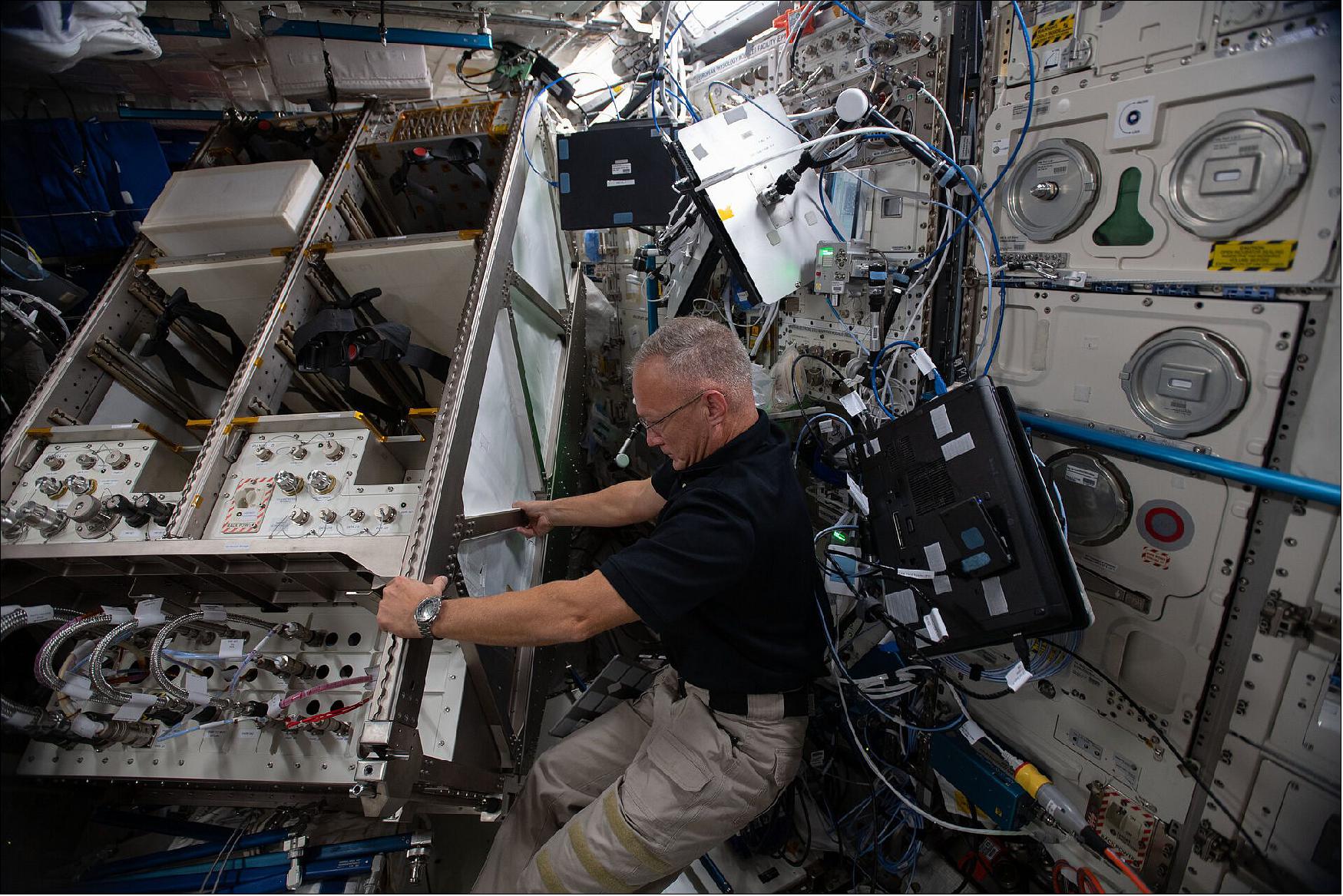
- The first three experiments planned for installation in EDR-2 include a metal 3D printer, an instrument investigating granular materials (VIP-GRAN) and a facility looking into heat transfer.
- The VIP-GRAN experiment will investigate how particles behave in microgravity to understand the underlying physics in detail. This involves looking at how particles jam together as they flow through small openings.
- The Heat Transfer Host experiment will continue ESA’s investigations into convection – how heat is transferred through air and liquids.
- EDR-2 arrived to the International Space Station on 20 May on a Japanese HTV-9 cargo vehicle and took the place of the European Transport Carrier (ETC); having served its time as a workbench and stowage facility, ETC was transferred to the HTV 9 spacecraft and will now be trashed.
- The EDR-2 and most of its experiments and technology demonstrators will be operated from CADMOS, the French User Support Operations Centre located in Toulouse, France.
• July 1, 2020: ASA astronauts Chris Cassidy and Robert Behnken concluded their spacewalk at 12:14 p.m. EDT. During the six hour and one-minute spacewalk, the two NASA astronauts completed half the work to upgrade the batteries that provide power for one channel on one pair of the station’s solar arrays. The new batteries provide an improved and more efficient power capacity for operations. 14)
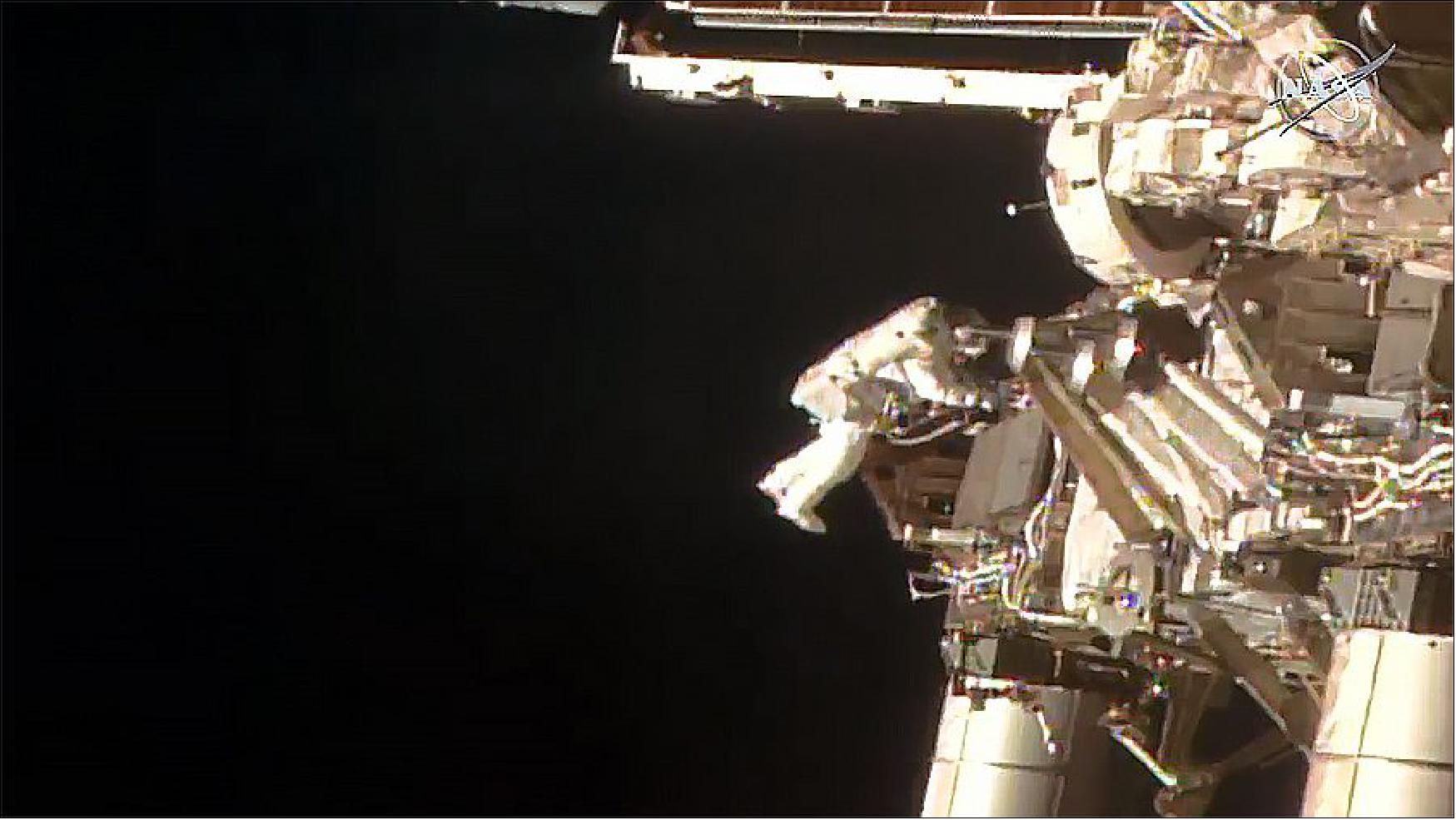
- They successfully moved and connected one new, powerful lithium-ion battery and its adapter place to complete the circuit to the new battery and relocated one aging nickel-hydrogen battery to an external platform for future disposal.
- They also loosened the bolts on nickel-hydrogen batteries that will be replaced to complete the power capability upgrade on the far starboard truss and complete the station’s battery replacement work that began in January 2017 with the first series of power upgrade spacewalks. Behnken and Cassidy will complete the work during the final two spacewalks later this month.
- Cassidy and Behnken also will route power and ethernet cables in preparation for the installation of a new external wireless communications system with an enhanced HD camera and to increase helmet camera coverage for future spacewalks. To support future power system upgrades, they also will remove a device called an “H-Fixture” that was installed before the solar arrays were launched to the space station.
- This was the eighth spacewalk for both each astronaut. Cassidy now has spent a total of 43 hours and 22 minutes spacewalking. Behnken has now spent a total of 49 hours and 41 minutes spacewalking.
- Space station crew members have conducted 229 spacewalks in support of assembly and maintenance of the orbiting laboratory. Spacewalkers have now spent a total of 60 days and 34 minutes working outside the station.
• On May 25, 2000 (Monday), the unpiloted Japanese cargo spacecraft was installed this morning at 10:46 a.m. EDT to the Earth-facing port of the International Space Station’s Harmony module, where it will remain for two months. Expedition 63 Commander Chris Cassidy of NASA, with assistance from Russian Flight Engineer Ivan Vagner of Roscosmos, operated the station’s Canadarm2 robotic arm from the station’s cupola and grappled the 12-ton spacecraft. 15)
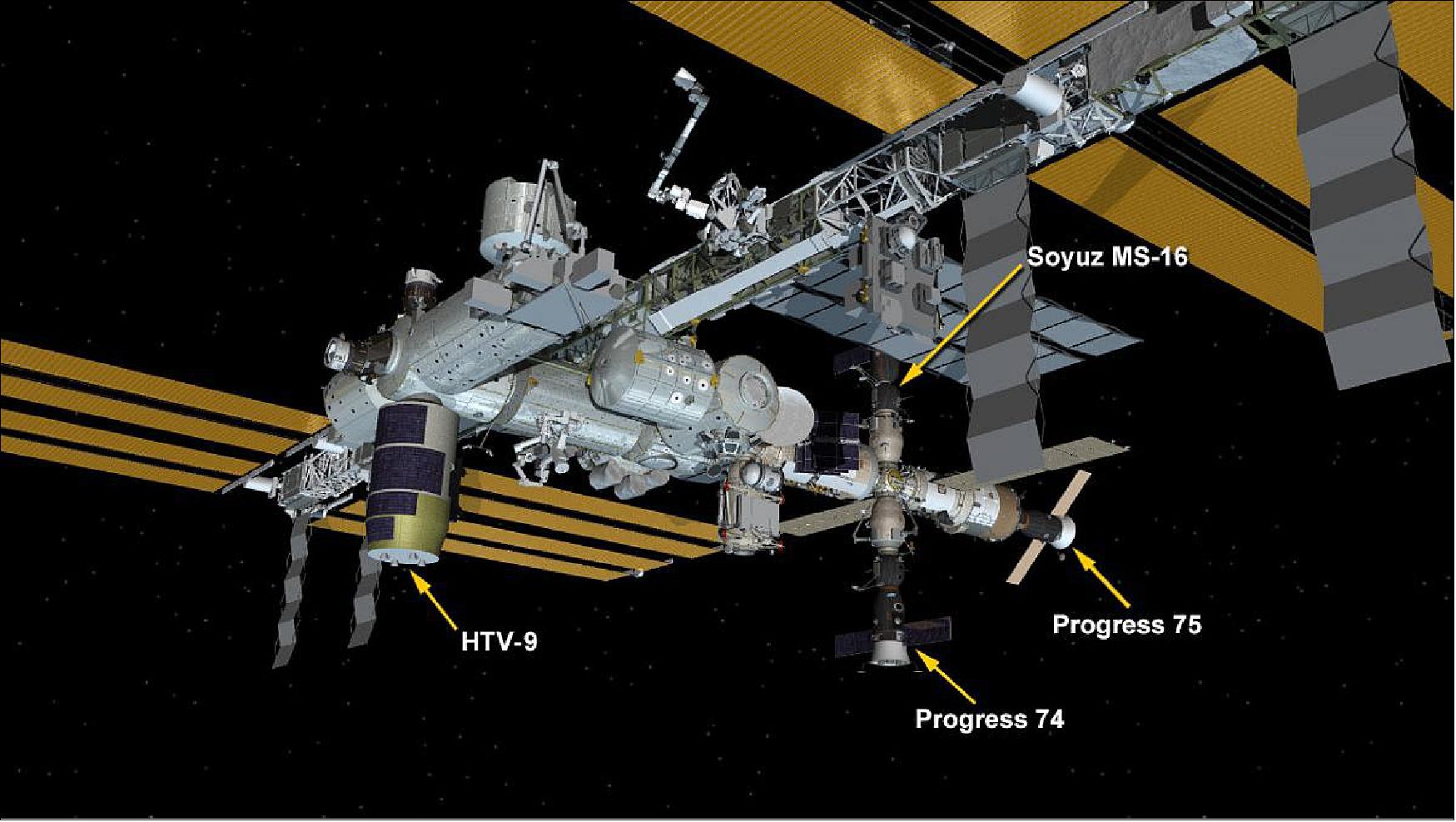
- NASA Commander Chris Cassidy began unloading the HTV-9 with help from Roscosmos Flight Engineer Ivan Vagner shortly after its arrival on Memorial Day.
- The final mission of Japan’s expendable resupply ship will stay at the station until late July. Japan’s next version of resupply ships (HTV-X) will be returnable and reusable providing more cargo capabilities.
• On May 25, 2020 (Monday), videos taken by the camera installed on the H-II Transfer Vehicle "Kounotori9" (HTV9) were successfully transferred to the ISS using wireless LAN (WLAN) in the vehicle's upward approaching phase for capture. This is the world's first successful image transmission using WLAN between two spacecraft in space. 16)
- The demonstrative experiment "Wireless LAN Demonstration" (WLD) comprises taking of videos of the ISS coming closer or departing with a camera installed in a spacecraft and transmission of these videos to the ISS on a realtime basis using WLAN so that onboard astronauts in the ISS can be aware of the spacecraft's current conditions. It is conducted with a view to achieving automatic docking in the future.
- During the mission conducted on May 25, the WLAN communication with the ISS were established at around 600m beneath the ISS, earlier than initially planned (250 m beneath), and the images taken with a camera installed on the HTV9 were uninterruptedly transmitted to the ISS in a stable manner for four hours.
- When the HTV9 was positioned at 30m beneath the ISS, correct switching between the JAXA system on the tip of the robotic arm of the Japanese Experiment Module "Kibo" with which communication had been established and the NASA system was successfully performed as a demonstration test of switching of the WLAN access point on the ISS.
- Thus, the targeted goal of the WLD mission has been attained: correct operation of the system required for the automatic docking experiment of the new ISS transfer vehicle "HTV-X2" has successfully been demonstrated.
- A similar demonstrative experiment is planned for the HTV9 during its return journey from the ISS.
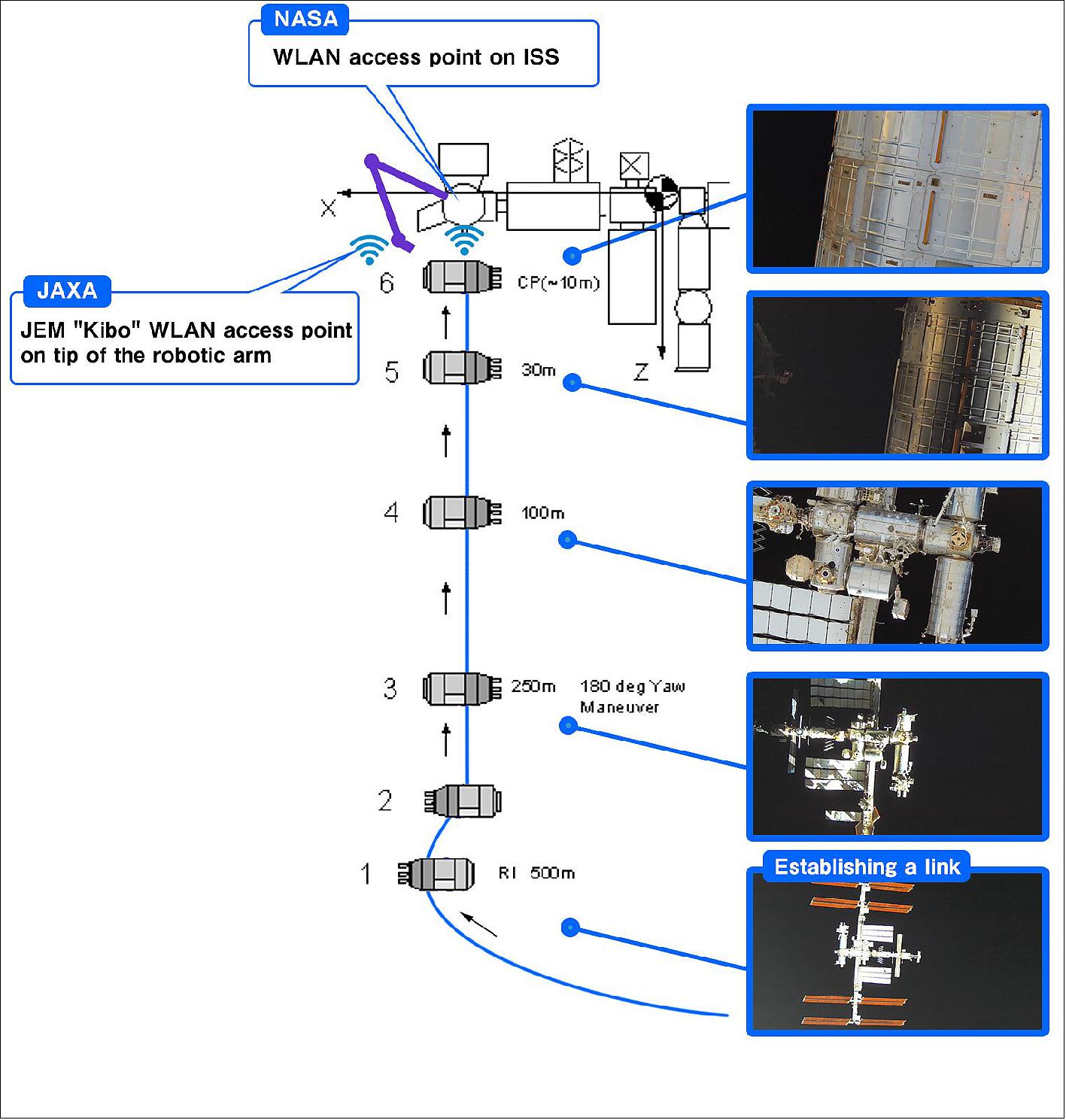
References
1) ”Launch Schedule of the H-II Transfer Vehicle KOUNOTORI9,” JAXA Press Release, 24 March 2020, URL: https://global.jaxa.jp/press/2020/03/20200324-1_e.html
2) Erin Winick, ”JAXA HTV-9 Spacecraft Carries Science, Technology to the International Space Station,” NASA, 12 May 2020, URL: https://www.nasa.gov/mission_pages/station/research/news
/jaxa-htv-9-spacecraft-carries-science-technology-to-the-international-space-station-iss
3) ”Launch Result of the H-II Transfer Vehicle Kounotori9 aboard the H-IIB Vehicle No. 9,” Mitsubishi Heavy Industries, 21 May 2020, URL: https://www.mhi.com/notice/notice_200521.html
4) Stephen Clark, ”Final H-2B rocket launch sends Japanese supply ship toward space station,” Spaceflight Now, 20 May 2020, URL: https://spaceflightnow.com/2020/05/20
/final-h-2b-rocket-launch-sends-japanese-supply-ship-toward-space-station/
5) ”HTV9 Payload,” JAXA, 14 May 2020, URL: https://iss.jaxa.jp/en/htv/mission/htv-9/payload/
6) ”Disruptive microsatellite imager captures images of less than a meter resolution,” CORDIS, 30 June 2019, URL: https://cordis.europa.eu/article/id
/413233-disruptive-microsatellite-imager-captures-images-of-less-than-a-metre-resolution
7) Osamu Fujita,Fundamental Research on International Standard of
Fire Safety in Space -base for safety of future manned mission (FLARE)
8) ”New European Drawer Rack set for Space Station,” ESA Science & Exploration, 18 May 2020, URL: http://www.esa.int/Science_Exploration/Human_and_Robotic_Exploration
/New_European_Drawer_Rack_set_for_Space_Station
9) Janet Anderson, Lee Mohon, ”Last of NASA’s Vital, Versatile Science ‘EXPRESS Racks’ Heads to Space Station,” NASA/MSFC, 18 May 2020, URL: https://www.nasa.gov/centers/marshall/news
/releases/2020/last-of-nasa-s-vital-versatile-science-express-racks-heads-to-space-station.html
10) ”Successful re-entry of H-II Transfer Vehicle “KOUNOTORI9” (HTV9),” JAXA Press Release, 20 August 2020, URL: https://global.jaxa.jp/press/2020/08/20200820-2_e.html
11) ”NASA Space Station On-Orbit Status 18 August, 2020 - Japan's HTV-9 Departs,” SpaceRef, 19 August 2020, URL: http://spaceref.com/international-space-station/
nasa-space-station-on-orbit-status-18-august-2020---japans-htv-9-departs.html
12) Mark Garcia, ”Spacewalk Preps, Satellite Deployment During Bone and Heart Research,” NASA Space Station, 13 July 2020, URL: https://blogs.nasa.gov/spacestation/2020/07/13
/spacewalk-preps-satellite-deployment-during-bone-and-heart-research/
13) ”New European rack,” ESA Science & Exploration, 8 July 2020, URL: https://www.esa.int/ESA_Multimedia/Images/2020/07/New_European_rack
14) Mark Garcia, ”Cassidy and Behnken Wrap Up Battery Spacewalk,” NASA, 1 July 2020, URL: https://web.archive.org/web/20200702021654/https://blogs.nasa.gov/spacestation/2020/07/01/cassidy-and-behnken-wrap-up-battery-spacewalk/
15) Mark Garcia, ”Japan’s Resupply Ship Installed on Station’s Harmony Module,” NASA, 25 May 2020, URL: https://blogs.nasa.gov/spacestation/2020/05/25
/japans-resupply-ship-installed-on-stations-harmony-module/
16) ”A World's First Successful Demonstrative Mission of On-orbit Wireless LAN Communication and Transmission of Monitored Docking Images!,” JAXA, 3 July 2020, URL: https://iss.jaxa.jp
/en/htv/mission/htv-9/news/wld.html
The information compiled and edited in this article was provided by Herbert J. Kramer from his documentation of: ”Observation of the Earth and Its Environment: Survey of Missions and Sensors” (Springer Verlag) as well as many other sources after the publication of the 4th edition in 2002. - Comments and corrections to this article are always welcome for further updates (eoportal@symbios.space).